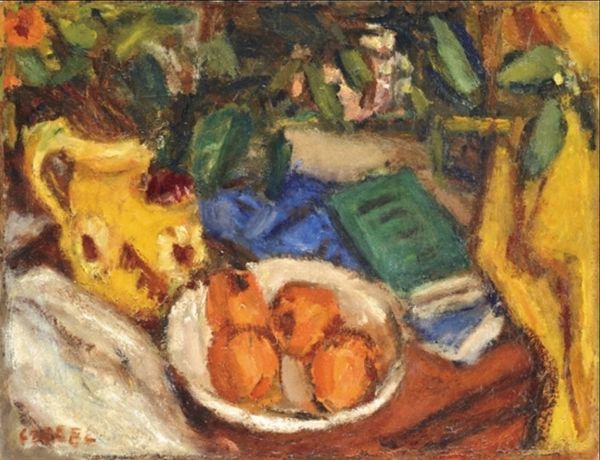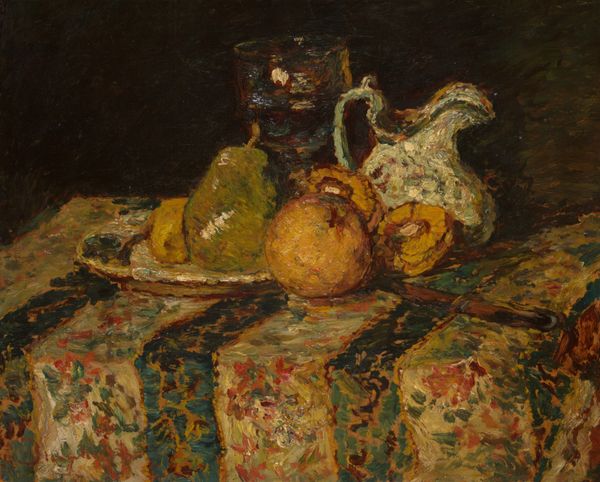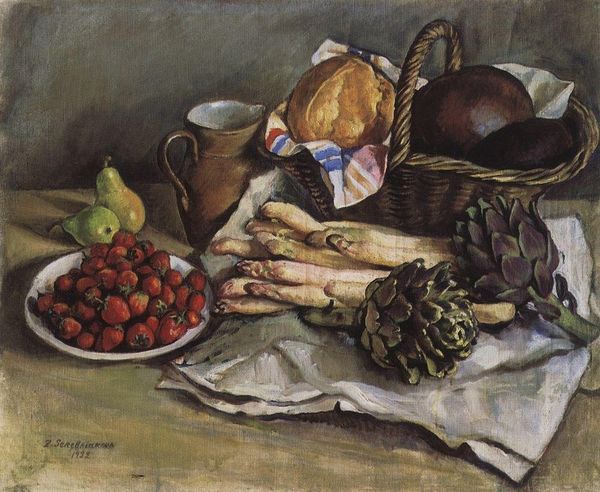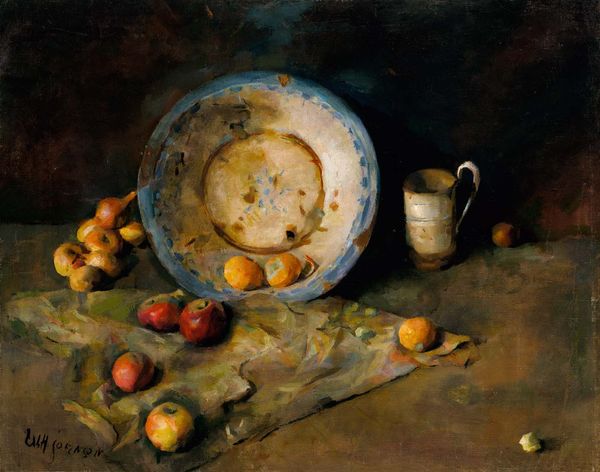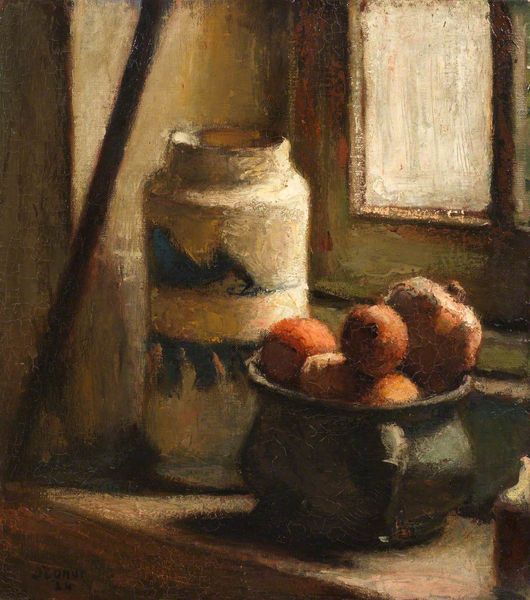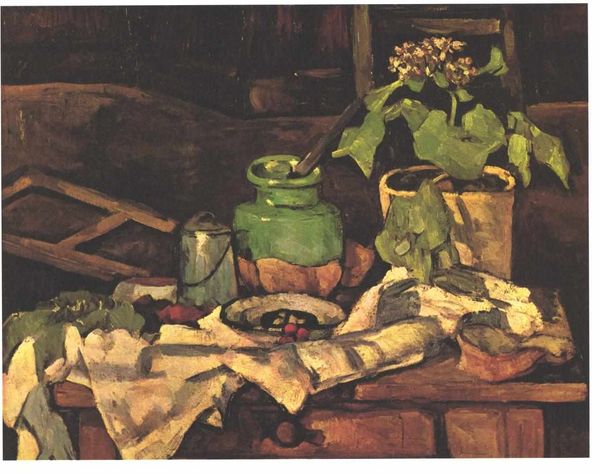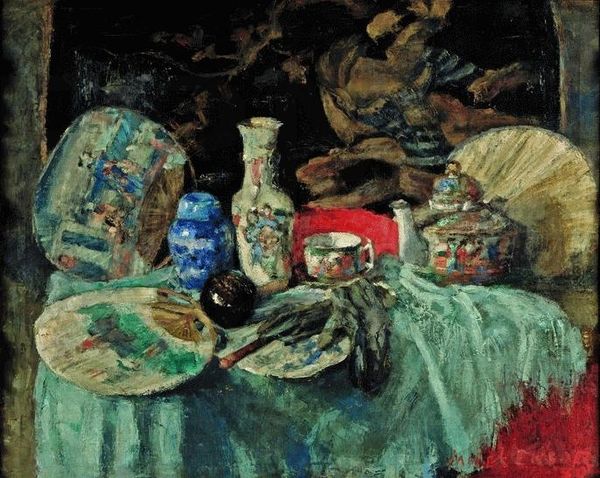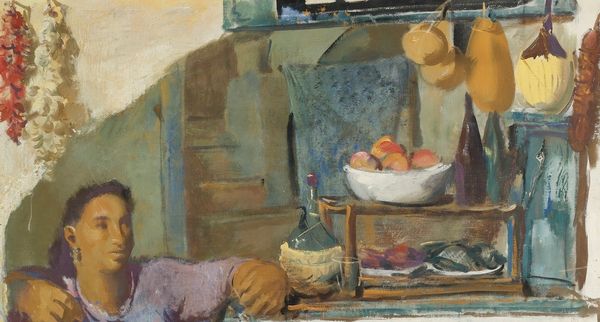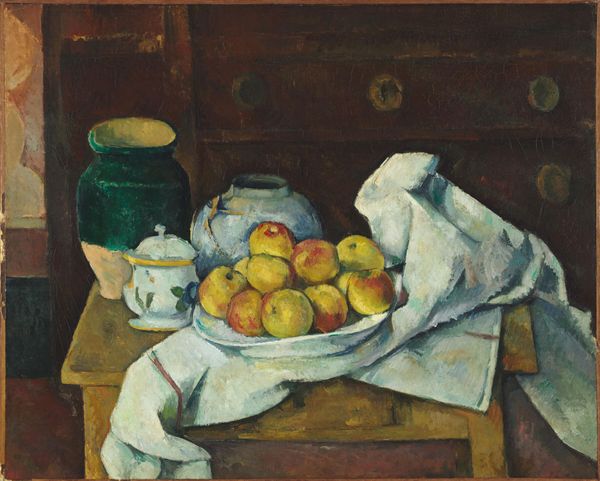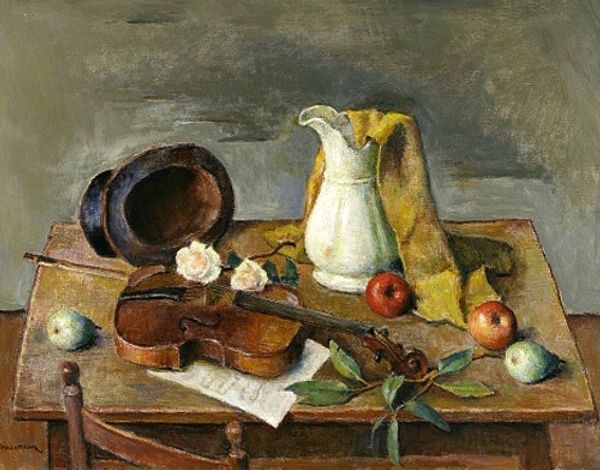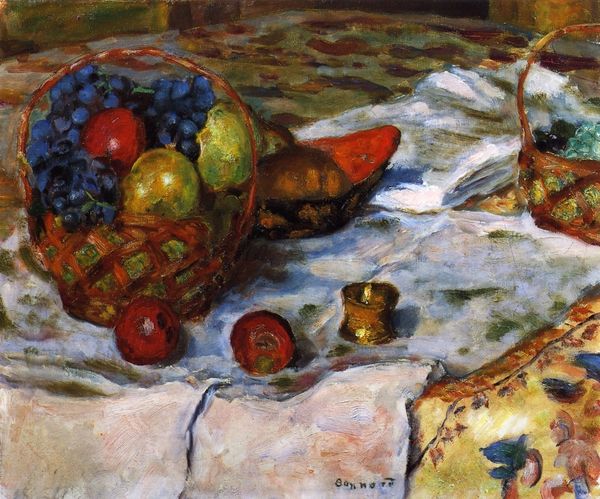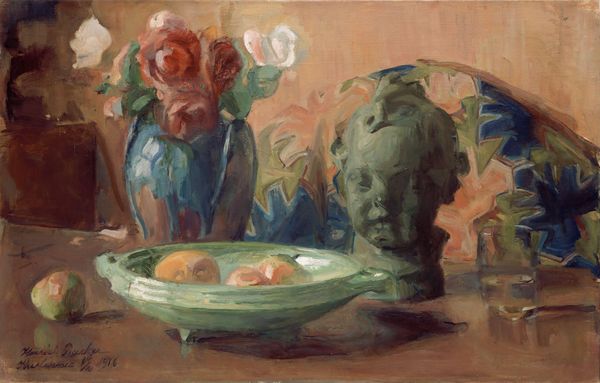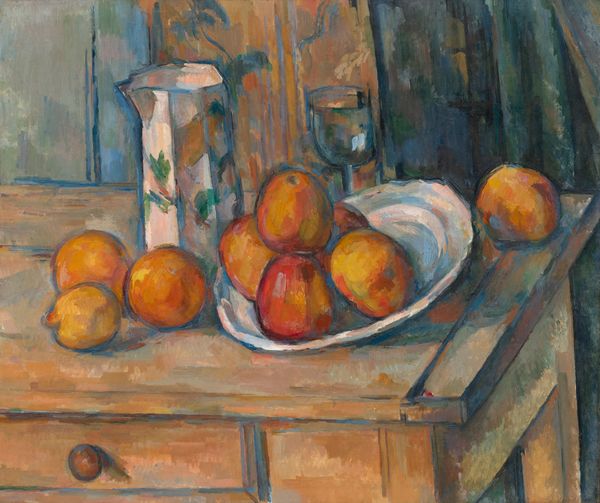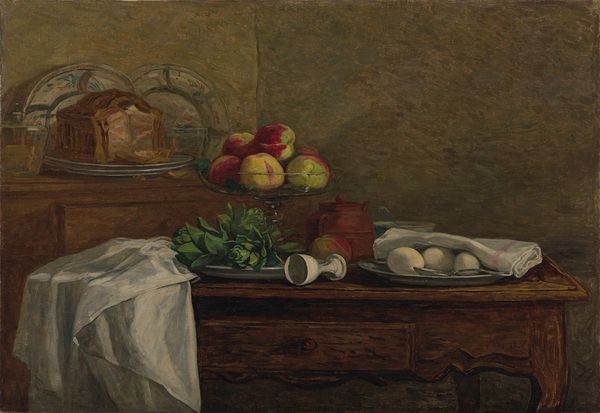
Copyright: Public domain
Curator: What a melancholic scene. It reminds me of a dream I had after a bad oyster, all muted colors and heavy shapes. Editor: I understand. It’s interesting how personal those immediate associations can be. We're looking at "Still Life," painted around 1912 by Magnus Enckell, who was a significant figure in Finnish art and part of the Post-Impressionist movement. The medium, here, is oil paint. Curator: The use of oil really emphasizes the solidity of everything—the metal jug, the produce. But the whole thing is also slightly…off. It doesn't feel like a celebration of bounty. More like… a quiet lament. Editor: Exactly! It would be reductive to say that it’s just a realist still life. Consider that Enckell and his cohort were reacting to social issues of the early 20th century—poverty, industrialization. We need to acknowledge the anxieties that colored the period. Were they only representing an aesthetic vision or an engagement with cultural criticism? How could we position this work within an intersectional understanding of this historical context? Curator: You know, when you put it like that, the dour atmosphere almost feels rebellious. The fish looks downright accusing. It is a weirdly poignant picture! Editor: Perhaps Enckell intended to provoke introspection by placing these common items in stark stillness. His arrangement almost subverts our assumptions about value and beauty. It allows us to rethink traditional notions of art’s purposes—beyond just aesthetic representation and into a mirror for social issues. Curator: I never thought a dead fish and a cabbage could carry such a load! It also reminds us that still life is perhaps never really "still." Editor: Indeed. Even objects carry their histories, ready to speak to us if we're prepared to listen.
Comments
No comments
Be the first to comment and join the conversation on the ultimate creative platform.
